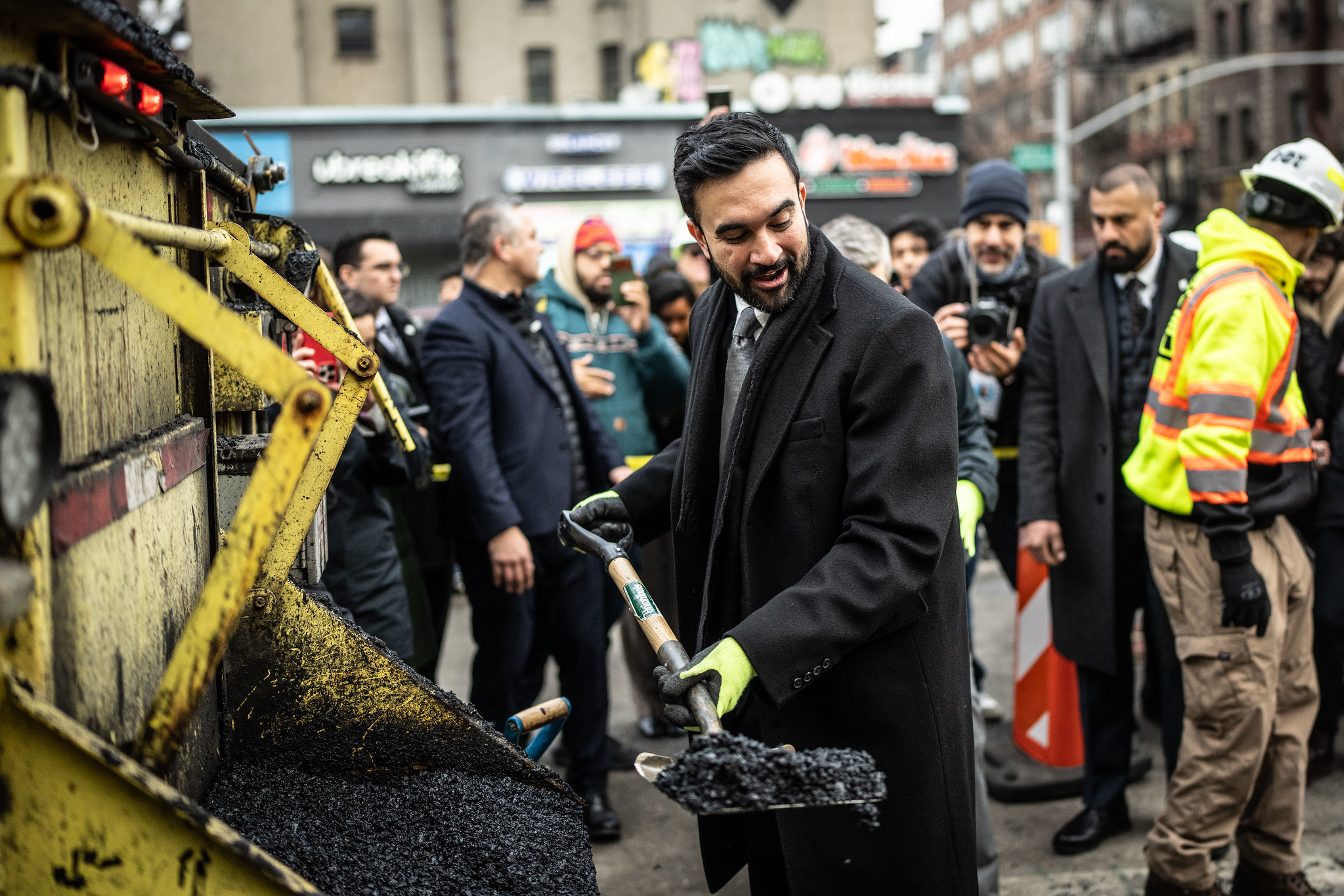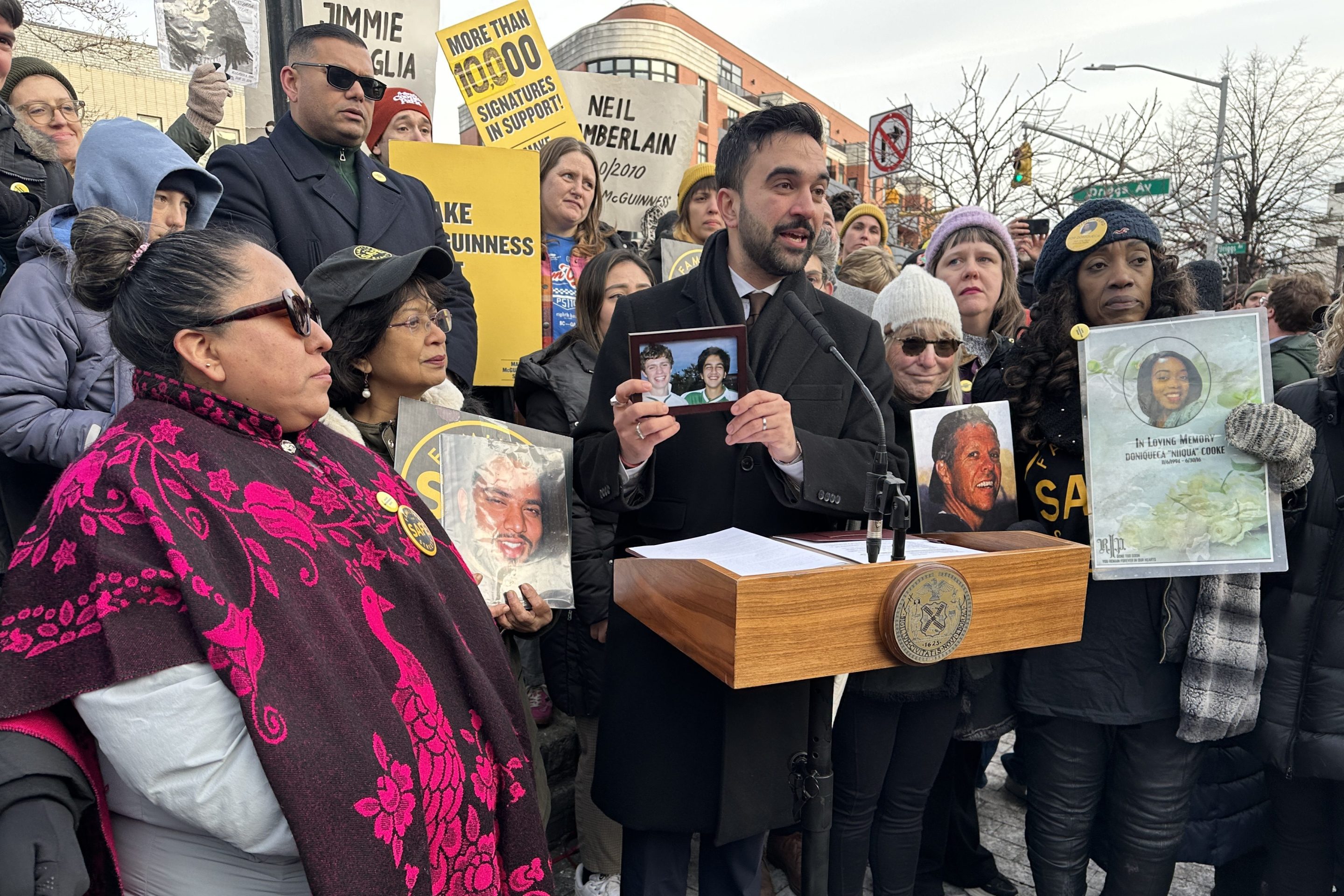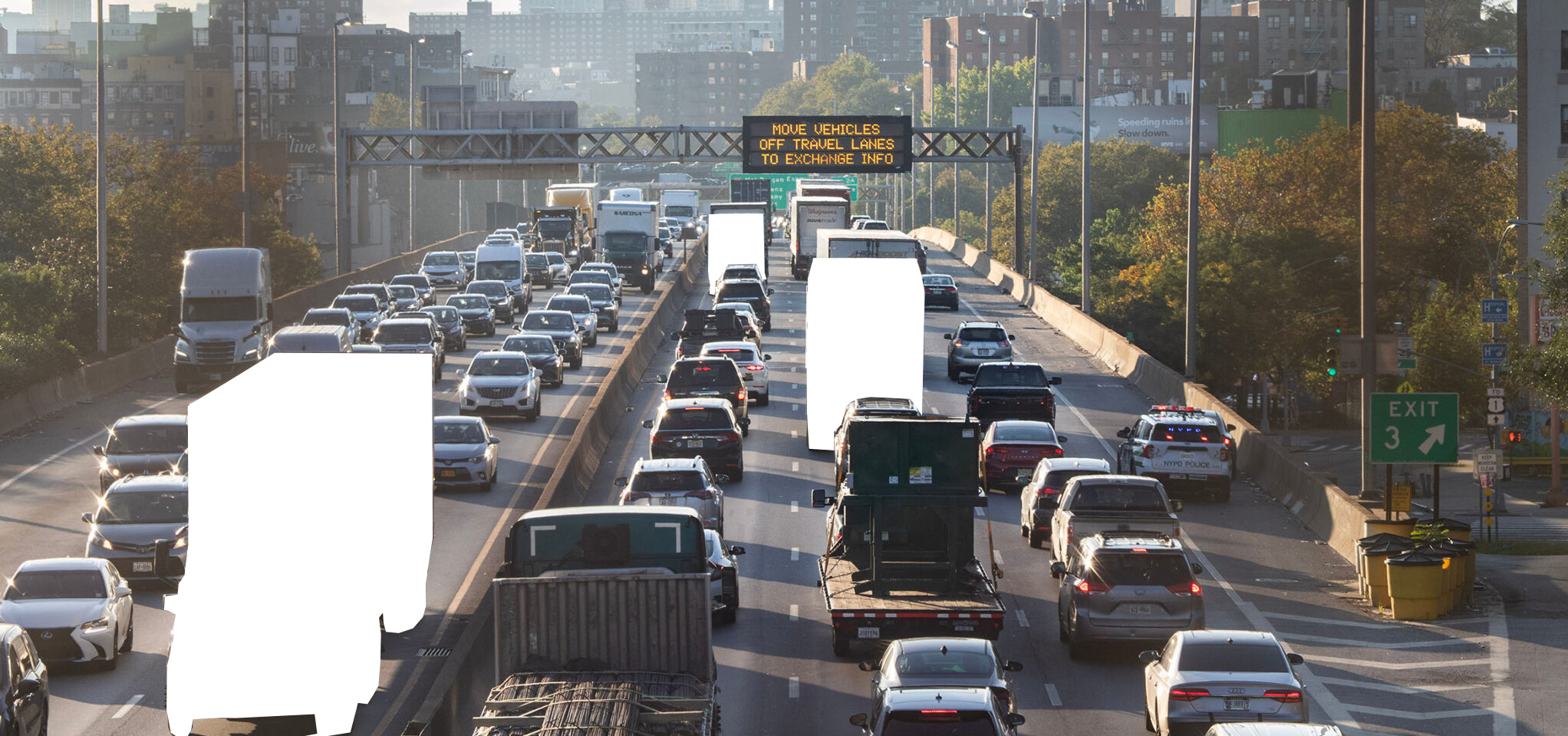A side-by-side comparison of PlaNYC congestion pricing and alternatives offered by pricing opponents shows that the Bloomberg proposal is the only one that would have an immediate impact on auto traffic while improving transit. Further, the report concludes that plans put forth by Congressman Anthony Weiner, Council Member Lew Fidler, and Keep NYC Congestion Tax Free would actually promote driving.
Does the Rubber Meet the Road? Investigating the Alternatives to Congestion Pricing, a 14-page study (pdf) issued by Environmental Defense and the Pratt Center for Community Development, breaks it down as follows.
Anthony Weiner's Reducing Traffic and Improving Our Environment: An Alternative to the Car Tax: Many aspects of this proposal are similar to the PlaNYC's original congestion pricing scheme. However, Congressman Weiner would limit congestion pricing to trucks only and would take a series of steps to open up more existing road space for faster-moving traffic, such as reducing alternate side street parking, and increasing traffic law enforcement, that would attract more traffic in the long run. He also suggests large-scale, long-term capital investments, such as building a Cross-Harbor Freight Tunnel, that while essential for long-term regional planning, cannot address traffic with the immediacy and revenue-generating capacity of congestion pricing.
Lew Fidler's 9 Carat Stone Plan: This plan to fund long term transportation projects, including three major tunnels requiring massive capital investment, essentially levies a regional payroll tax that would support the state's general fund and not be dedicated to transportation investment, unlike tolls. Councilman Fidler proposes hydrogen powered cars, which automakers and scientists agree are many years and breakthroughs away from being practical and commercially viable. He supplements these ideas with short term measures such as increased truck loading zones and enforcement of traffic laws that, while perhaps good to speed traffic flow and ensure better safety, are not likely to achieve significant reductions in traffic volumes. Other elements of Councilman Fidler's plan, such as moving government offices from Manhattan to the other boroughs, would simply displace current traffic to new locations, and to the extent that those locations are less centrally-located in the transit system, there would likely be a net increase in traffic overall.
Keep NYC Congestion Tax Free's Alternative Approaches to Traffic Congestion Mitigation in the Manhattan Central Business District: This plan, primarily supported by AAA, the Metropolitan Parking Association and the Queens Civic Congress, among others, combines several separate measures that collectively claim to meet and exceed the 6.3% vehicle miles traveled (VMT) reduction of the mayor's plan. In fact, many will simply make driving easier in the Central Business District, thus probably attracting more drivers over time. Furthermore, the report's additive approach for totaling VMT reduction overstates the results dramatically, double-counting many overlapping traffic reduction measures.
"Unlike congestion pricing, these alternatives would encourage driving -- not discourage it -- and as a result attract more traffic in the long term," says Michael Replogle, transportation director for Environmental Defense and the report's primary author, via media release. "They also fail to match the criteria required by the federal grant, by state law, and the reality test for effectiveness, timeliness and revenue potential."
"Alternative proposals to fund mass transit through broad income and payroll tax increases are like taking a sledgehammer to a nail because they place special burdens on low and middle income residents," says Joan Byron, Director of the Sustainability and Environmental Justice Initiative of The Pratt Center. "In contrast, a congestion pricing plan benefits lower-income folks most and burdens them least since the vast majority of them rely on public transportation, and do not drive into Manhattan's zone."





